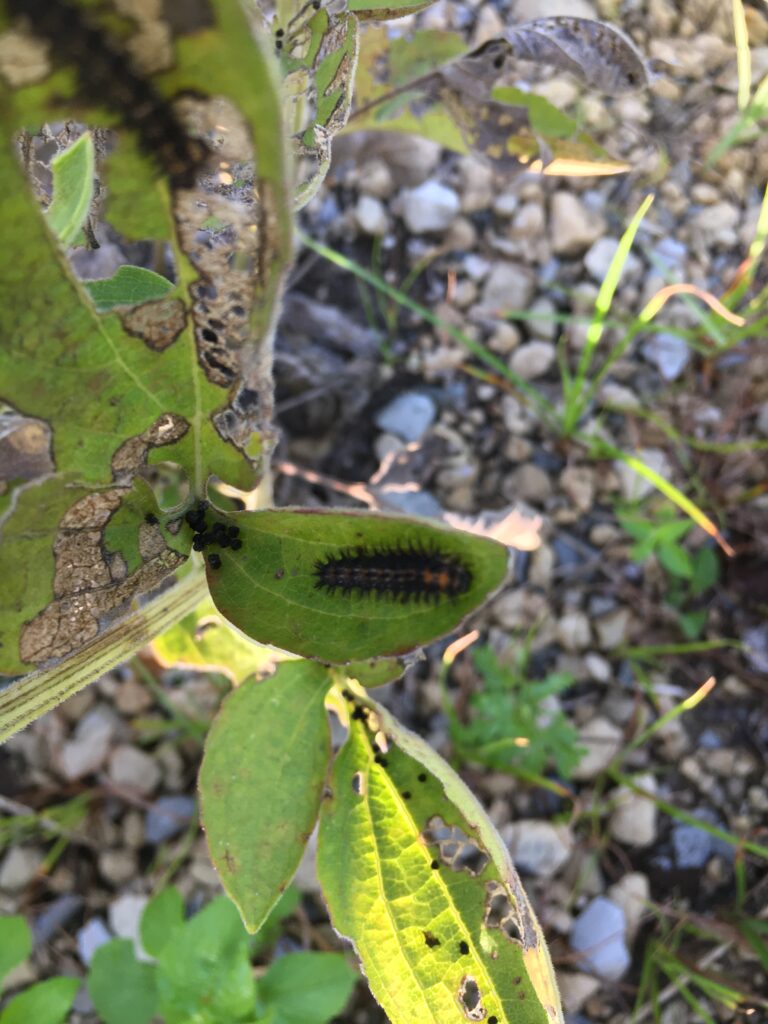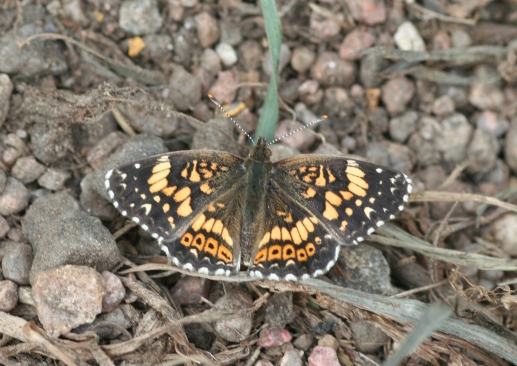Coneflowers are so emblematic of the prairie. I love to include these prairie denizens in many of my designs. They are quite adaptable and I love the yellows, purples and pink colors of the true natives as they bloom during the summer. The new cultivated varieties are attractive too. A mass of coneflowers with little bluestem make a nice combination by providing color and texture through the growing season. But right now, many of the plants are full of little black or brown caterpillars that are using Echinacea and Rudbeckia as their food.

Coneflowers as host plants
We are getting calls from our members and customers, and are seeing damage on our plants as well. Coneflower leaves are blackening, getting holes and disappearing. Contrary to how you may feel, this damage is an indication that your garden is functioning properly. Host plants are the vital food source that caterpillars live on. Adult butterflies will seek out these plants to lay their eggs on because they know that the caterpillar cannot travel far and will not survive if placed on a plant that they cannot eat. These caterpillars will eventually turn into checkerspot butterflies or a relative in that family.
Think differently about your landscape
One of the goals of any garden – besides beauty – is to have pollinators in your garden. Sometimes they might not immediately be in the form you desire. Sometimes pollinators or their caterpillars may eat your plants or deform them. Don’t be too hasty to spray or remove the culprits. They are doing what comes naturally to them and it is often better to leave the insect. These insects are fantastic food for fledgling birds as well.
Understand the life cycle
The caterpillars eating your coneflowers will make cocoons in a week or so and then turn into butterflies. We must learn to embrace these caterpillars and accept some damage. The coneflowers will eventually recover. The tradeoff is that we create habitat suitable for butterflies to complete their life cycle. The “ugly, hairy” caterpillars will morph into beautiful butterflies that are equal to the beauty of the flower.

Photo credit: https://commons.wikimedia.org/wiki/File:Chlosyne_gorgone.jpg
The key to a successful butterfly garden is to plant both nectar and host plants, so that the butterflies will have a food source in all stages of their life cycles. We often design our landscapes as nectar sources and forget that these pollinators need host plants too. So as you design your landscape, include flowering plants that produce nectar and also double as host plants.
Other host plants
- Black Eyed Susan (Rudbeckia hirta) Host plant for: Silvery Checkerspot, Gorgone Checkerspot, Bordered Patch butterfly
- Aster spp. Host plant for: Pearl crescent, Painted Lady and more
- Coneflower (Echinacea spp.) Host Plant for: Silvery Checkerspot and more
- Hollyhock (Alcea spp.) Host plant for: Painted Lady, Common Checkered-Skipper and more
- Golden Alexander (Zizia aurea) or Dill (Antheum graveolens) Host plant for: Black Swallowtail, Anise Swallowtail and more NOTE: The Black Swallowtail will feed on any plants within the Parsley family.
- Sunflower (Helianthus spp.) Host plant for: Silvery Checkerspot, Painted Lady and more
- Milkweeds (Asclepias spp.) Host plant for: Monarch
- Mallow (Malva spp.) Host plant for: Common Checkered-Skipper, Gray Hairstreak , Painted Lady and more
- Violet (Viola spp.) Host plant for: Great Spangled Fritillary, Variegated Fritillary, Meadow Fritillary and more
